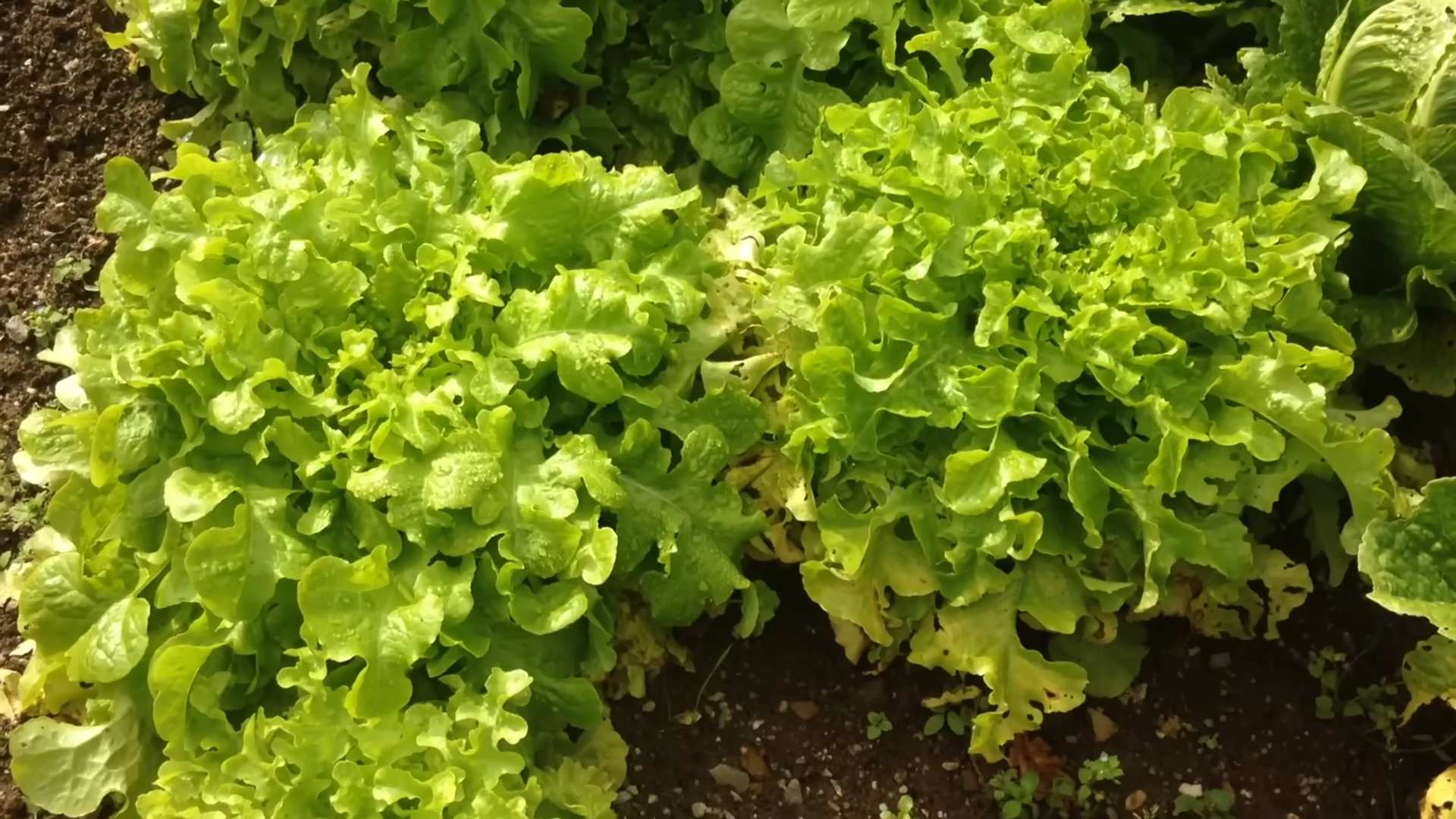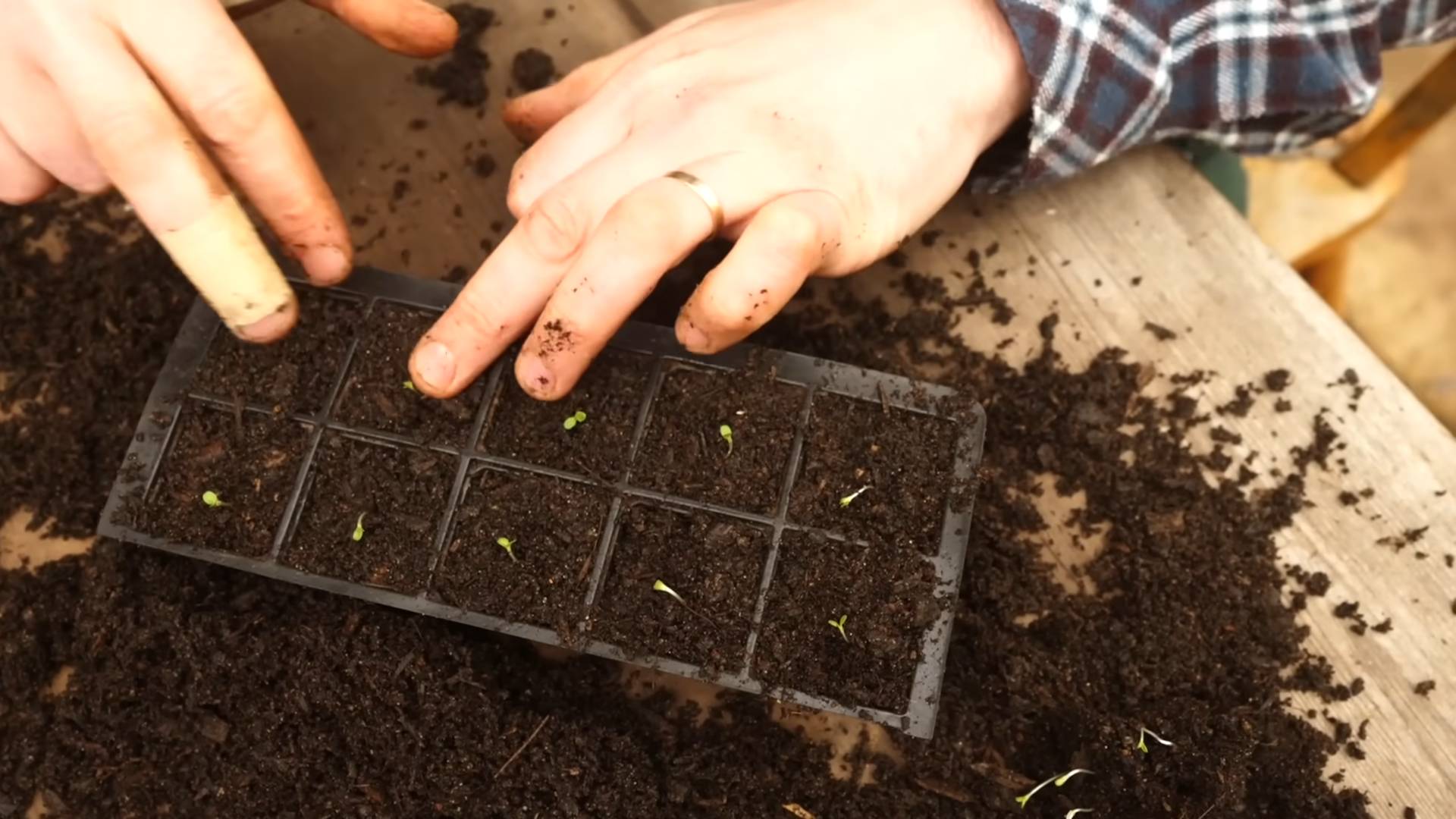Grow Perfect Lettuce right in your own backyard, even if you think you have a “brown thumb!” Have you ever dreamt of crisp, vibrant salads bursting with flavor, all sourced just steps from your kitchen? Imagine the satisfaction of harvesting your own fresh lettuce, knowing exactly where it came from and what went into growing it. This isn’t just a pipe dream; it’s an achievable reality with a few simple DIY tricks and hacks.
Lettuce has a rich history, dating back to ancient Egypt, where it was initially cultivated for its seeds and oil. Over time, it evolved into the leafy green we know and love today, becoming a staple in cuisines worldwide. But in today’s world, with concerns about pesticides and the rising cost of groceries, growing your own lettuce is more relevant than ever.
That’s why I’m so excited to share these easy-to-follow DIY tips and tricks that will help you grow perfect lettuce, regardless of your gardening experience. We’ll cover everything from choosing the right varieties to creating the ideal growing conditions, ensuring you have a continuous supply of delicious, homegrown lettuce all season long. Get ready to ditch the store-bought greens and embrace the joy of homegrown goodness!

How to Grow the Perfect Lettuce Yourself: A DIY Guide
Hello dear garden friends! I love fresh lettuce, and nothing tastes better than homegrown. But I also know that it can sometimes be a challenge to grow the perfect lettuce. That’s why today I’m sharing my best tips and tricks with you, so you too can soon be harvesting crisp, delicious lettuce from your own garden. Let’s get started!
What You Need: The Right Preparation
Before we begin, we naturally need the right equipment and materials. Here is a list to have everything ready:
- Lettuce seeds: Choose varieties that you like and are suitable for your climate. Head lettuce, leaf lettuce, romaine lettuce – the selection is huge!
- Seed starting mix: For starting indoors, special seed starting mix is ideal as it is low in nutrients and promotes root formation.
- Pots or seedling trays: Small pots or seedling trays are perfect for starting seeds.
- Garden soil: For the bed or pot where the lettuce will later grow.
- Compost: Compost is a natural fertilizer and improves soil quality.
- Watering can or spray bottle: For watering the plants.
- Garden tools: A small trowel, a rake, and possibly a dibber.
- Slug pellets (optional): If you live in an area with many slugs, slug pellets can be useful. However, I personally prefer natural methods of slug control.
- Mulching material (optional): Mulch helps to retain moisture in the soil and suppress weeds. Straw or grass clippings work well.
Phase 1: Starting Indoors (Optional, but Recommended)
Starting seeds indoors has many advantages. You can start growing earlier, the plants are more robust when they go outdoors, and you have more control over the conditions.
- Prepare seedling trays: Fill the seedling trays or pots with seed starting mix. Press the soil down lightly.
- Sow seeds: Distribute the lettuce seeds evenly on the soil. Make sure they are not too close together. Sprinkle a thin layer of soil over them.
- Water: Moisten the soil carefully with a spray bottle. The soil should be damp, but not wet.
- Choose a location: Place the seedling trays in a bright, warm place. A windowsill is ideal.
- Maintain moisture: Keep the soil moist by spraying it regularly. Avoid waterlogging.
- Wait for germination: The seeds usually germinate within 7-14 days.
- Pricking out: As soon as the seedlings have their first true leaves (besides the seed leaves), it’s time to prick them out. This means you carefully take the small seedlings out of the trays and transplant them into larger pots. Be careful not to damage the roots.
Phase 2: Preparing the Bed
While the small lettuce seedlings are growing indoors, we can prepare the garden bed. A well-prepared bed is half the battle for a bountiful harvest.
- Choose a location: Lettuce prefers a sunny to partially shaded location. Avoid harsh midday sun, especially in summer.
- Prepare the soil: Loosen the soil thoroughly and remove weeds, stones, and roots.
- Incorporate compost: Work plenty of compost into the soil. Compost improves soil structure, retains moisture, and provides nutrients.
- Smooth the soil: Rake the soil smooth.
- Cover the bed (optional): If you have slug problems, you can protect the bed with a slug fence.
Phase 3: Planting Lettuce
Now comes the exciting part: planting!
- Prepare the plants: Before you plant the lettuce in the bed, water them thoroughly.
- Dig planting holes: Dig planting holes about 20-30 cm apart. The distance depends on the lettuce variety.
- Planting: Carefully place the lettuce plants in the planting holes. Make sure the root ball is level with the soil surface.
- Press down: Gently press the soil around the plants.
- Water: Water the plants thoroughly.
Phase 4: Care and Harvest
After planting comes care. With the right care, you ensure that your lettuce grows optimally and you can harvest soon.
- Watering: Lettuce needs regular water, especially in dry weather. It’s best to water in the morning or evening to avoid evaporation. Avoid waterlogging.
- Weeding: Keep the bed free of weeds. Weeds compete with the lettuce for nutrients and water.
- Slug control: Regularly check for slugs and take measures to control them if necessary.
- Fertilizing (optional): If the lettuce is not growing well, you can fertilize it with an organic fertilizer. Nettle tea is a natural and effective fertilizer.
- Mulching (optional): Mulching helps to retain moisture in the soil and suppress weeds.
- Harvesting: The harvest time depends on the lettuce variety. You can harvest leaf lettuce gradually by cutting the outer leaves. Head lettuce is ready for harvest when the head is firm. You can harvest romaine lettuce when the leaves have reached a good size.
Additional Tips for the Perfect Lettuce
- Practice crop rotation: Do not plant lettuce in the same spot every year. Rotate your crops to avoid diseases and pests.
- Companion planting: Lettuce gets along well with many other vegetables. Good neighbors include radishes, carrots, and onions.
- Provide shade: On hot days, it can be useful to provide some shade for the lettuce to protect it from burns.
- Harvest regularly: Regular harvesting promotes the growth of the lettuce.
- Grow different varieties: Grow different lettuce varieties to have a diverse harvest.
- Control slugs naturally: Beer traps, coffee grounds, or eggshells can help keep slugs away.
- Watch for diseases: Watch for signs of diseases or pests and take action if necessary.
- Analyze the soil: A soil analysis can help determine the nutrient content of the soil and allow for targeted fertilization.
- Don’t plant too deep: Be careful not to plant the lettuce too deep, as this can lead to rot.
- Be patient: Sometimes it takes a little longer for the lettuce to grow. Be patient and don’t give up!
Common Problems and Solutions
Downy mildew: Downy mildew is a fungal disease that appears as yellowish spots on the leaves. Good vent…de.
Slug infestation: Slugs can quickly devour lettuce. Slug pellets, beer traps, or natural enemies like hedgehogs can help.
Aphids: Aphids suck the sap from the leaves and can weaken the lettuce. Spraying with water or using beneficial insects like ladybugs can help.

Conclusion
So, there you have it! Growing perfect lettuce at home, bursting with flavor and free from store-bought worries, is absolutely within your reach. This isn’t just about saving a few dollars; it’s about connecting with your food, understanding its journey from seed to plate, and enjoying the unparalleled taste of freshly harvested greens. The DIY trick we’ve outlined is a game-changer, simplifying the process and maximizing your chances of success, even if you’re a complete beginner.
Think about it: no more wilted lettuce languishing in the crisper drawer. No more questioning the origins or the chemicals used in its cultivation. Instead, imagine crisp, vibrant leaves, ready to be tossed into salads, layered onto sandwiches, or used as a refreshing wrap. The satisfaction of harvesting your own lettuce is truly unmatched.
But the beauty of this DIY approach lies in its adaptability. Feel free to experiment with different lettuce varieties. Romaine, butterhead, loose-leaf – each offers a unique texture and flavor profile. Consider adding companion plants like marigolds or basil to deter pests naturally and enhance the overall health of your lettuce patch. You can also adjust the soil composition based on your local climate and the specific needs of your chosen lettuce variety.
Don’t be afraid to get creative with your container gardening setup. Repurpose old buckets, create vertical gardens, or even utilize hydroponic systems for an even more efficient and space-saving approach. The possibilities are endless!
We understand that gardening can sometimes feel daunting, but this DIY trick is designed to be accessible and rewarding. It’s about embracing the learning process, celebrating small victories, and enjoying the fruits (or rather, the leaves!) of your labor.
We wholeheartedly encourage you to give this DIY trick a try. Start small, be patient, and don’t be discouraged by initial setbacks. Gardening is a journey, and every mistake is an opportunity to learn and improve.
And most importantly, we want to hear about your experience! Share your photos, tips, and challenges in the comments section below. Let’s build a community of home gardeners, supporting each other and celebrating the joy of growing perfect lettuce together. Your insights could inspire others to embark on their own gardening adventures. So, grab your seeds, get your hands dirty, and prepare to enjoy the freshest, most delicious lettuce you’ve ever tasted! Let us know how this DIY trick helped you to grow perfect lettuce.
Frequently Asked Questions (FAQ)
What kind of lettuce grows best using this DIY trick?
While this DIY trick is versatile and can be used for various lettuce types, some varieties tend to thrive particularly well. Loose-leaf lettuces like Black Seeded Simpson and Red Sails are excellent choices for beginners due to their quick growth and ease of harvesting. Butterhead lettuces, such as Buttercrunch and Tom Thumb, are also relatively easy to grow and offer a delicate, buttery flavor. Romaine lettuce, like Paris Island Cos, requires a bit more space and attention but rewards you with crisp, sturdy leaves perfect for salads. Ultimately, the best lettuce for you will depend on your personal preferences and local climate. Experiment with different varieties to discover your favorites!
How often should I water my lettuce plants?
Watering frequency is crucial for healthy lettuce growth. Generally, you should aim to keep the soil consistently moist but not waterlogged. Check the soil moisture level daily by sticking your finger about an inch into the soil. If it feels dry, it’s time to water. During hot, dry weather, you may need to water your lettuce plants every day, while in cooler, wetter conditions, you can reduce the frequency to every other day or even less. Avoid overhead watering, as this can lead to fungal diseases. Instead, water at the base of the plants, using a watering can or a soaker hose.
What kind of soil is best for growing lettuce?
Lettuce prefers well-draining, fertile soil that is rich in organic matter. A slightly acidic to neutral pH (around 6.0 to 7.0) is ideal. You can improve your soil by adding compost, aged manure, or other organic amendments. If you’re growing lettuce in containers, use a high-quality potting mix specifically formulated for vegetables. Avoid using garden soil in containers, as it can become compacted and poorly drained.
How much sunlight does lettuce need?
Lettuce thrives in full sun (6-8 hours of direct sunlight per day) but can also tolerate partial shade, especially in hot climates. If you live in an area with intense summer heat, providing some afternoon shade can help prevent your lettuce from bolting (going to seed prematurely).
How do I prevent pests from attacking my lettuce plants?
Pests like aphids, slugs, and snails can be a nuisance for lettuce growers. To prevent pest infestations, consider using companion planting. Marigolds, for example, are known to repel aphids and other pests. You can also use physical barriers like row covers or netting to protect your lettuce plants. Regularly inspect your plants for signs of pests and remove them manually. For slugs and snails, you can set out beer traps or use diatomaceous earth.
How do I know when my lettuce is ready to harvest?
The harvesting time depends on the lettuce variety and your personal preference. Generally, you can start harvesting loose-leaf lettuce when the leaves are about 4-6 inches long. Simply snip off the outer leaves, leaving the inner leaves to continue growing. For head lettuce, wait until the head is firm and well-formed before harvesting. Cut the head at the base of the plant.
What causes lettuce to bolt, and how can I prevent it?
Bolting is when lettuce plants prematurely go to seed, resulting in bitter-tasting leaves. It’s typically triggered by hot weather or long days. To prevent bolting, choose heat-tolerant lettuce varieties, provide afternoon shade, and water your plants regularly. You can also try succession planting, sowing new seeds every few weeks to ensure a continuous supply of fresh lettuce.
Can I grow lettuce indoors?
Yes, you can absolutely grow lettuce indoors, especially if you have a sunny windowsill or a grow light. Choose compact lettuce varieties and use a well-draining potting mix. Ensure that your plants receive adequate light and water them regularly.
What are some creative ways to use my homegrown lettuce?
Beyond salads and sandwiches, there are many creative ways to use your homegrown lettuce. Use large lettuce leaves as wraps for tacos or spring rolls. Add chopped lettuce to soups, stews, or stir-fries. Blend lettuce into smoothies for a boost of nutrients. You can even grill or sauté lettuce for a unique and flavorful side dish.
How can I store my harvested lettuce to keep it fresh longer?
To store your harvested lettuce, wash and dry the leaves thoroughly. Wrap them in a paper towel and store them in a plastic bag or container in the refrigerator. This will help to keep the lettuce crisp and fresh for up to a week.




Leave a Comment